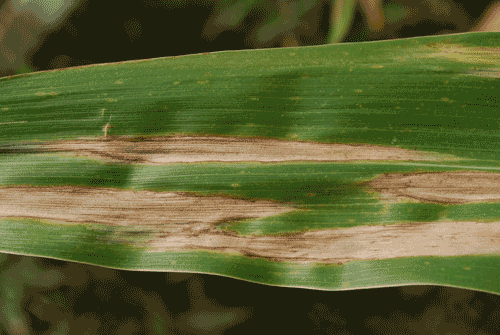Cropside: When corn looks dead
AGRONOMIC INFORMATION FROM ONTARIO'S CROP SPECIALISTS


IDENTIFYING THE CULPRIT behind dead-looking corn can be challenging. Use the following information and photos to help remove the mystery surrounding physiological and disease causing reasons for dead-looking corn.
Not all top die back is disease related. However, in some cases leaf diseases place an extra stress on the plant’s ability to fill the ear and this hastens senescence. Under these conditions the plant tends to cannibalize itself as it moves carbohydrates from the leaves and stalk to meet the demands of the ear. Besides pre-mature senescing, increased lodging may occur.
physiological top die back
On occasion, corn plant senescence occurs from both the top and bottom of the plant at the same time (left). This can occur in years when the plant is filling a relatively large ear and is under soil moisture stress as the season ends. It is a physiological process and is not necessarily related to any disease. Often this pattern is evident across an
entire field.
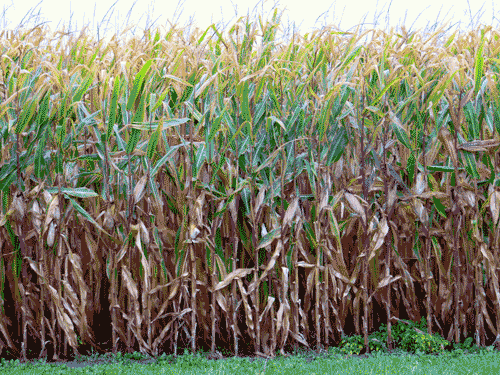
anthracnose leaf blight
Anthracnose incidence in Ontario has been increasing. The diseased area on the leaf (left) is often not large but it can result in a condition in which the upper leaves (above the cob) die prematurely. These leaves can appear to have damage similar to late season frost injury and can occur as individual plants or in small patches.
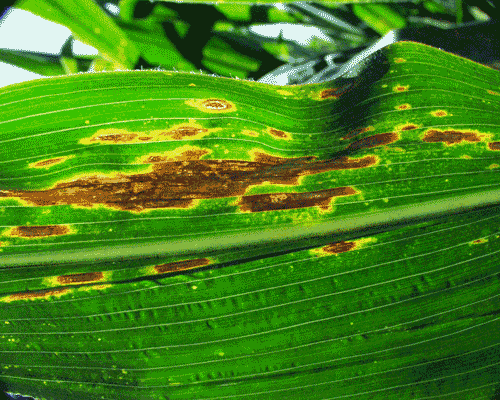
anthracnose stalk rot
Anthracnose can also result in black lesions on the stalks causing stalk quality and strength to deteriorate (left). If Anthracnose leaf blight is observed early in the season be sure to re-evaluate for stalk rot and lodging later.
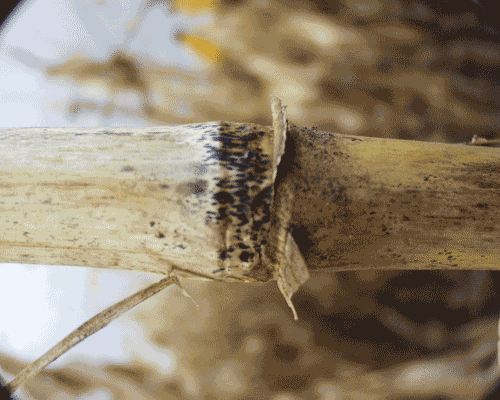
disease induced senescence
In some cases corn plants (above) can be so severely infected with leaf disease (note hybrid on the left which is very susceptible to Northern leaf blight) that the plant appears to be prematurely senescing.
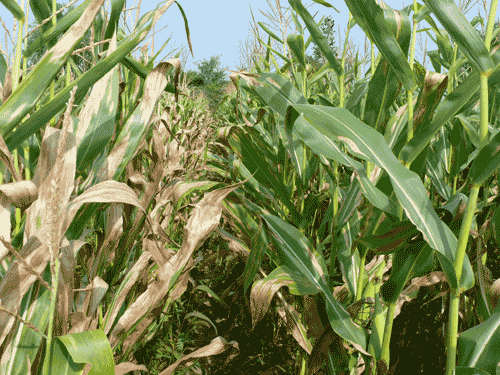
northern leaf blight
The lesions resulting from Northern leaf blight (left) are elliptical in shape and are often longer and cover a greater percentage of the leaf area than Anthracnose. •
